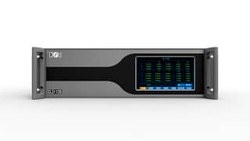For over a century, energy companies have been the backbone of power supply through centralized systems of generation, transmission, and distribution. However, in the era of digitization and ubiquitous sensors, the energy landscape is undergoing a remarkable revolution. At the heart of this transformation lies the power of real-time operational data.
Advanced Metering Infrastructure: Smart Meters to the Rescue
Smart meters have become the unsung heroes in this data-driven evolution. These intelligent devices, deployed across homes and businesses, enable two-way communication of power usage data with impressive precision. Not only do they empower utilities to bill customers more accurately based on consumption patterns, but they also provide valuable insights into grid capacity limitations. Additionally, they support exciting emerging applications like time-varying pricing and automated demand response, putting the power in the hands of consumers.
Distribution System Monitoring: Keeping the Grid in Check
Traditionally, distribution grids lacked the means to remotely monitor vital parameters like voltages, currents, and temperatures. However, with the advent of new digital technologies, such as Distribution Management Systems, we can now gain a real-time pulse on the health of the grid. Thanks to internet-connected field devices, data is aggregated to provide insights down to the circuit level. This level of monitoring enables utilities to proactively address potential issues, ensuring a more reliable and efficient distribution network.

(symbol image, credit CLOU)
Renewables Integration Insights: Harnessing the Power of the Sun and Wind
As renewable energy sources like solar and wind farms continue to grow, their integration into the grid becomes increasingly important. Real-time telemetry data from these variable sources provides valuable insights into power quality and plant-level generation. This information aids in short-term forecasting, helping to predict ramp events and optimize operations and maintenance. By building predictive failure models based on high-fidelity data, utilities can take proactive steps to enhance the reliability and performance of renewable energy systems.
Data Analytics Value: Unleashing the Hidden Potential
The true power of real-time data lies in the realm of data analytics. By mining vast troves of operational datasets and employing machine learning algorithms, utilities can extract deeper insights that drive asset performance, understand customer behaviours, and optimize system operations. This not only supports smart grid applications like predictive cybersecurity protections but also helps to lower costs and improve overall efficiency. The possibilities are endless when data and analytics join forces to shape the future of energy.
Digitalization: Illuminating the Path to a Brighter Future
Digitalization serves as the cornerstone for transforming energy network operations into a highly integrated and flexible platform, primed for clean, distributed, and resilient power of the future. With widespread access to real-time data and advanced analytics, the energy sector becomes a dynamic ecosystem where innovation thrives and sustainability takes centre stage.
Takeaway
The data-driven transformation of energy is revolutionizing the way we generate, deliver, and utilize power. Through advanced metering infrastructure, distribution system monitoring, renewables integration, and the power of data analytics, we have the tools to shape a more sustainable and efficient energy future.
However, it's important to note that in many countries, the full benefits of these advancements are being lost due to the absence of the required infrastructure for real-time communication. Without the ability to capture and analyse data in real-time, the potential for optimizing energy usage, predicting demand patterns, and enhancing grid resilience is significantly hindered. Efforts must be made to bridge this gap and enable countries to fully harness the power of data-driven energy transformation.
If you're as excited about this topic as I am, don't forget to share your thoughts in the comments below! Let's spark a lively conversation about the future of energy.
Until then, keep shining bright like a solar panel on a sunny day!
Editor's note: This article was originally published in December 2023 and has been updated for comprehensiveness.





All comments are moderated before being published. Inappropriate or off-topic comments may not be approved.